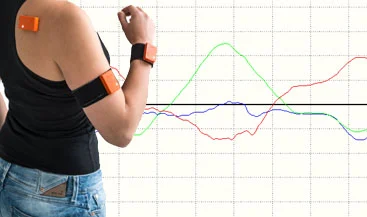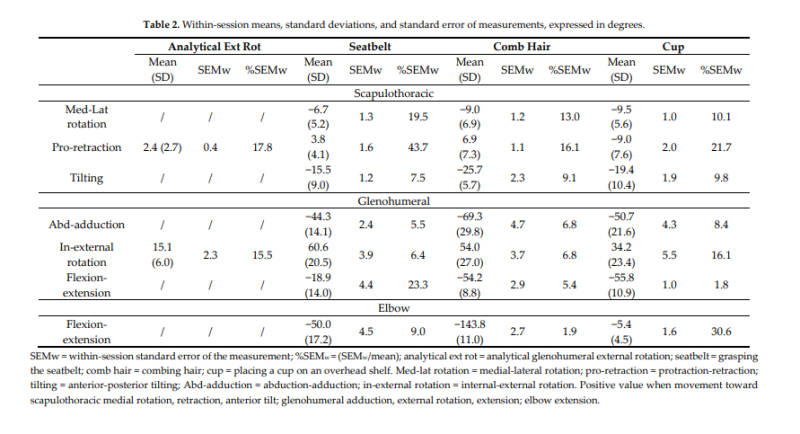Share
The condition called adhesive capsulitis, also called “frozen shoulder”, occurs because the capsule of the shoulder joint becomes stiff and compressed. In this case, the range of motion of the shoulder joint is restricted and compensatory movements in the elbow joint and scapulothoracic joint occur. Objective measurements of these movements are important in the clinical evaluation and treatment of adhesive capsulitis.
This study, carried out by the REVAL Rehabilitation Research Center at the University of Hasselt, aims to identify Movella’s inertial sensor technology through measurements of movements. Inertial sensor technology is an advanced technology that precisely and accurately tracks movements. This allows healthcare professionals to analyze patients’ movement patterns in detail and plan treatment processes more effectively.
The researchers recruited a study group of 10 patients who had been diagnosed with adhesive capsulitis using the American Physical Therapy Association (APTA) criteria in the last 6 months in the orthopedic department of Jessa Hospital, Hasselt University. Movella’s MVN Awinda system was used to determine the scapulothoracic, glenohumeral and elbow joint motion angles during four activities (hair combing, shoulder external rotation, seat belt grip, placing a cup on a shelf) that patients defined as difficult.

Each participant performed three measurement sessions and four activities were performed with five repetitions in each measurement session. There was a 2-5 day interval between the first measurement session and the second and third measurement sessions and participants were asked not to perform any medical treatment or upper extremity exercise during this interval.
For each anatomical model, segmental coordinate systems were defined based on the recommendations of the International Society of Biomechanics. Scapulothoracic and elbow joint angles were calculated following the ZXY Euler angle sequence. Glenohumeral joint angles were calculated following the XZY Euler sequence. Scapulothoracic kinematic evaluation included lateral/medial rotation (X), protraction/retraction (Y), and posterior-anterior tilt (Z); glenohumeral joint evaluation included abduction-adduction (X), internal/external rotation (Y), and flexion/extension (Z). Elbow joint kinematics were evaluated in one plane, flexion/extension (Z).
The results of the study confirmed that inertial sensor technology is reliable and effective in the assessment of shoulder and elbow movements in patients with adhesive capsulitis. There was a significant correspondence and consistency between the measurements made in the same session and by the same operator. Similar results were also obtained between measurements made by different operators.
In the process of adhesive capsulitis treatment, Movella products can be used for joint motion measurements in daily life activities with the precision and reliability it provides. By using this valuable technology to improve the quality of life of patients with adhesive capsulitis and restore their independence in daily activities, healthcare professionals are achieving promising results.
